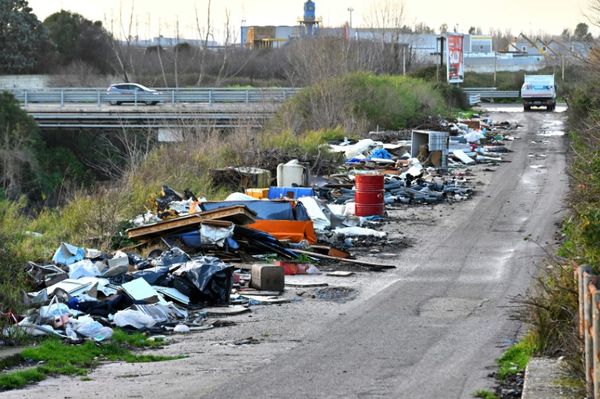
The climate crisis made the record drought across the northern hemisphere this summer at least 20 times more likely, scientists have calculated. Without human-caused global heating, the event would have been expected only once every four centuries.
The drought hit crop production and power supplies, exacerbating the food and energy crises already sparked by Russia’s war in Ukraine. Droughts will become even more severe and more frequent unless the burning of fossil fuels is phased out, the researchers warned.
The dry conditions, assessed using data on soil moisture, largely resulted from the heatwaves that struck across North America, Europe and Asia, with lower rainfall relatively less important. The scientists said a summer as hot as that of 2022 would have been “virtually impossible” without global heating and in Europe alone there were 24,000 heat-related fatalities.
The analysis examined conditions across the northern hemisphere, excluding the tropics, and in western and central Europe, where the drought was particularly severe and significantly reduced crop yields. The European summer was the driest in records that stretch back to 1950, while the northern hemisphere drought was the second driest on record, after 2012.
The dry conditions caused widespread water shortages and wildfires, with a record number of blazes in Europe, the first national drought alert in China and more than half of the US being declared in drought. In the UK, temperatures hit 40C for the first time on record, shocking scientists, and hosepipe bans are still in place across much of the country.
“The 2022 summer has shown how human-induced climate change is increasing the risks of droughts in densely populated and cultivated regions,” said Prof Sonia Seneviratne, at ETH Zurich, Switzerland, and part of the analysis team. “We need to phaseout the burning of fossil fuels if we want to [prevent] more frequent and more intense droughts.”
Dr Friederike Otto, at Imperial College London, UK, and also part of the team, said: “In Europe, drought conditions led to reduced harvests. This was particularly worrying as it followed a climate change-fuelled heatwave in [India and Pakistan] that also destroyed crops, and happened at a time when global food prices were already extremely high due to the war in Ukraine.”
The scientists had already found that the deadly South Asian heatwave was made 30 times more likely by the climate crisis and that the intense rainfall, which caused devastating floods across Pakistan, was made 50% worse by global heating. In August, an analysis by the Guardian laid bare the devastating intensification of extreme weather around the world, supercharged by human-caused climate change of just 1C to date.
The drought study was carried out by an international team of researchers as part of the World Weather Attribution group. It analysed soil moisture levels in June, July and August 2022 in the top metre of soil, where plants take up water. The team used weather and soil data and computer models to compare the likelihood of the summer drought in today’s heated world and in a world without global heating.
The scientists found the record northern hemisphere drought of 2022 would be expected once every 20 years in today’s climate but only every 400 years without climate change. The drought in western and central Europe was made at least three to four times more likely by global heating. But they said this does not mean that climate change has had less influence in Europe as the fingerprint of climate change is harder to discern in smaller regions.
The analysis is complex and carries uncertainties, but the researchers said the estimates in the study are conservative, with the real influence of human activities likely even higher.
Prof Maarten van Aalst, director of the Red Cross Red Crescent climate centre, said: “Climate change is really hitting us hard, not just in poor countries like Pakistan, but also in some of the richest parts of the world, like west central Europe, that had been considered less vulnerable. It’s playing out in front of our eyes even faster than we might have expected.”
“We’re also seeing the impacts compounding and cascading across regions and sectors,” he said. For example, the drought cut hydropower production, as well as power from nuclear and coal plants, due to lack of cooling water. “That compounded a situation where electricity prices were already under stress, due to the Russia-Ukraine war and when we needed lots of electricity for air conditioning all across Europe to deal with the high heat.”
“This new study clearly points to the fingerprint of climate change and should be another wake-up call to reduce emissions, but also to invest more in resilience,” van Aalst said.







